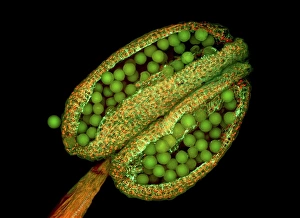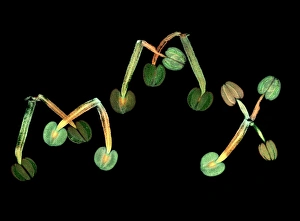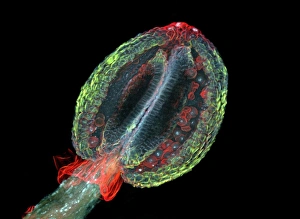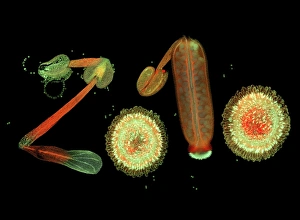Androecium Collection
Androecium, also known as the male reproductive part of a flower, plays a crucial role in plant reproduction
All Professionally Made to Order for Quick Shipping
Androecium, also known as the male reproductive part of a flower, plays a crucial role in plant reproduction. The intricate details of this fascinating structure can be observed under a microscope. In the Thale cress flower, a micrograph reveals the androecium consisting of stamens with anthers that hold pollen grains. These tiny structures are essential for pollination and fertilization. Moving on to the Lily flower bud, light micrographs capture multiple stages of its development. As the bud matures, it gradually unveils its androecium composed of numerous stamens surrounding a central pistil. This arrangement ensures efficient transfer of pollen from one flower to another. The Broad bean flower exhibits its own unique androecium characteristics when examined closely under a microscope. The light micrograph showcases stamens with elongated filaments supporting large anthers filled with pollen grains ready for dispersal by wind or insects. Similarly, in the Poppy flower bud's light micrograph, we witness delicate stamen filaments holding up their vibrant red anthers. This captivating image highlights how diverse flowers can be in terms of their androecium structure. Understanding these microscopic details allows us to appreciate nature's intricacies even more deeply. Through studying various species' androecia, scientists gain insights into evolutionary adaptations that have shaped plants over millions of years. So next time you come across a beautiful bloom like the Lily or encounter lesser-known flowers such as Thale cress or Broad bean, take a moment to marvel at their hidden wonders – including their remarkable androecia captured through stunning light micrographs.







